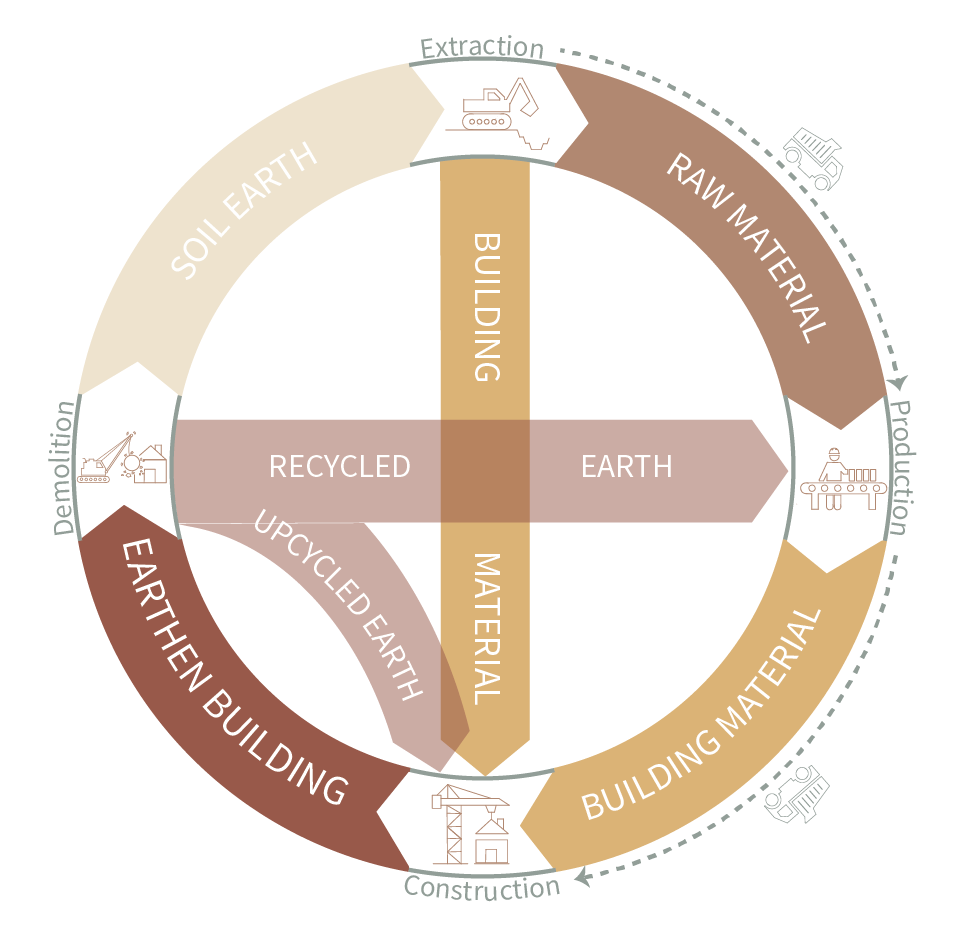Introduction / Clay in theory / Clay in practice / Catalog / Generic design / Reflections
2
CLAY IN THEORY
History and geography

(Adapted from Fontaine, L. et Anger, R. ,2009)
Earth was probably one of the first material used for building when the human settled down. Different techniques have been developed depending on the area and the quality of each earth. The use of earth in construction has known various successes throughout the ages and since the late XXth, renewed interest is visible due to the urgency of the climate crisis, and architects now tend to use earth in a modern way. This material is present all over the world and, therefore, is a local material almost everywhere. The map above highlights a presence mainly in the southern hemisphere, where temperatures are warm and the climate is drier. But it also shows that it is used in colder climates like in Europe, even here in southern Sweden.
It is estimated that 50% of the world’s population lives today in earthen buildings. In addition, 15% of the buildings on the UNESCO heritage list are made of earth (Fontaine & Anger, 2009). This testifies of the high architectural quality of the material as well as its resilience.
What is clay ?
Earth is very different from one place to another. It is made of different types of elements. Those elements are mainly sand, silt and clay, but sometimes it is possible to find larger aggregates like gravel or rocks. In construction, the earth takes different names depending on the proportion of each component. When earth has a high content of clay particles, it is called clay or clay loam.

(Adapted from Minke , G., (2009))
Clay particles are the smallest components of the earth. Clay is the bonding agent in the earth, it is to earth what cement is to concrete (Fontaine & Anger, 2009). However contrary to cement, clay needs low energy to be transformed and therefore has low embedded energy and can be reused infinitely

(M. Roe, Mineralogical Society, n.d)
There are also different types of clays and according to the Swedish Geotechnical Institute the most common type of clay in Sweden is Illite. It is generally a good clay for construction due to its high and strong cohesion capacity. It also has several good properties regarding indoor climate such as a large specific surface.

Indoor climate
Clay is known for its properties to improve indoor climate, a wide topic that involves many aspects. Health, comfort and happiness of occupants are impacted by the quality of indoor climate and it also affects the productivity and efficiency to perform a task in a given environment (Nilsson P.-E., 2003)
According to the World Health Organisation, indoor climate is made up of different environment presented in the figure below.

(Data from WHO)
Clay properties on indoor climate
During the development of the master thesis, the different properties of clays and their respective relationships to the different environments of the indoor climate were discussed. Several properties of the earth contributing to a healthy and comfortable indoor climate were highlighted and are presented in the following diagram. This drawing points out that the use of the earth has a significant impact on thermal comfort, mainly thanks to its capacity to store heat. Therefore, it can be used in passive thermal comfort strategies.

Clay & Sustainability
Earth material has a very low impact in all its LCA (Life Cycle Assessment). Indeed, the excavated material can be formed directly on the building construction (Rammed earth, cob, plaster…), or can go through a production stage (on site or remote) to transform the material into a building material (CEB, Adobe, prefabricated rammed earth…). In both cases, as long as earth is used in its raw state (unfired and non-stabilized) there is no transformation but only a modeling step that consists of shaping elements and letting them dry naturally until it is ready to be used. This step requires very little energy and emits little emissions compared to usual materials.
Clay is a very circular material : at the end of its life, the building can be demolished and transformed into a new material for a second life. It can also be crushed and left in place since it is natural.

